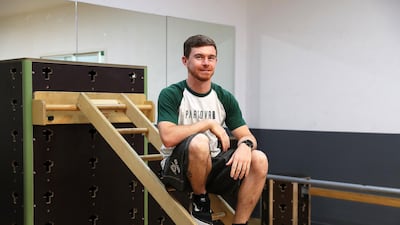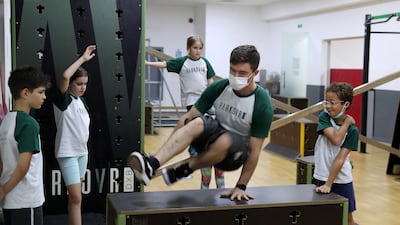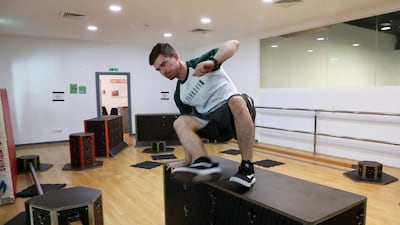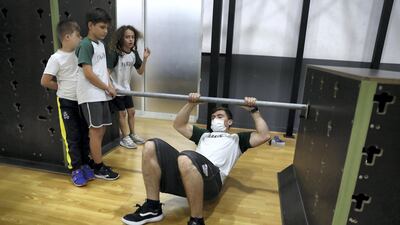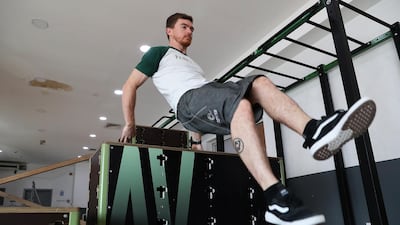A parkour athlete who has become the UAE’s very own Spider-Man is teaching children how to take up the sport.
Harry Murden, 28, teaches at Parkour DXB, a training studio in Dubai’s Al Quoz neighbourhood. Nearly 300 young, aspiring athletes practise their agility, movement and balance each week at the studio.
Parkour is a freestyle movement sport where a person travels through a man-made or natural obstacle course by running, jumping, climbing, vaulting or rolling – without any safety equipment.
The sport has gained popularity over the years and several videos of dangerous stunts – where athletes are seen jumping from one high-rise building to another – went viral.
"I first experienced parkour when I was 13 years old. I had seen some random people doing it at a park in the UK and I introduced myself straight away," Mr Murden told The National.
“I had spent a lot of my childhood dancing, like classical ballet, tap, modern and street styles, but this was something completely new for me. I haven’t looked back since.”
Now, Mr Murden can jump from four to five-storey-high buildings and jump through low and high obstacles while running at a very fast speed.
Two years ago, he moved to Dubai to teach the children at Parkour DXB.
“Our goal with coaching is to spread awareness of parkour,” Mr Murden says.
“It boosts our confidence. I was a very quiet, shy child, and now I'm not. It made me confident in being around and approaching people.”
Children aged four to 16 and some adults train at Parkour DXB. All of them have their own animal totems, representing their age groups.
Four-year-olds who are just starting out are called wallabies, five to seven-year-olds are flying squirrels, spider-monkeys are aged eight to 10, thunder-cats are 11 to 13 and falcons are 14 to 16.
The training studio has an age-friendly environment obstacle course, with practice beams, ramps and hanging bars.
“Our philosophy here is the enjoyment of the sport,” he said.
“It is very easy right now to see parkour videos on social media, so we do find some children that come in and say ‘I want to do a backflip’.
“That is fantastic, but there is a certain amount of work [that needs] to go in before we reach that point.”
Mr Murden said he has noticed some children who have the potential of taking up the sport as a career.
He said it is usually those who ask a lot of questions and are keen to learn more.
Mr Murden sometimes uses the Spider-Man movie to point out some parkour moves.
"I wouldn't say that the inspiration of Spider-Man pushed me towards Parkour, but it's definitely fun to think that we are training to move more like Spider-Man does."
When he is not coaching, Mr Murden is often found training at the parkour courses in Dubai Design District or freestyling around Dubai Marina or Kite Beach.
"My favourite outdoor parkour spot in Dubai right now is around the residence towers in Jumeirah Beach Residence," he said.
"There is a variety of different walls and obstacles that make for some interesting options. It is also very shaded from the sun, which helps in the hotter months."
He said there are a lot of risks involved with the sport, but that practice and mastering the techniques make it a lot safer.
In his 15 years of practising parkour, Mr Murden has escaped with only minor scrapes and scratches although some other athletes have been severely injured while doing extreme stunts.
“There is always an amount of fear involved,” he said. “And it's something that we teach our students very early on, but that's OK.
“When we go out and we're training, we want to push limits and boundaries. At the same time, we're very aware that we don't want an injury that's going to set us back and make things more difficult.
“The element of fear helps us think for a second that it's serious and that I should re-think my approach if a jump, for instance, is too high.”

